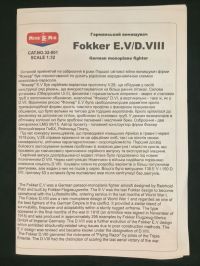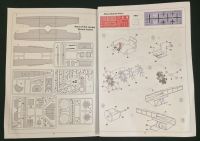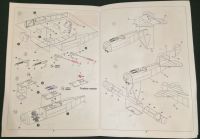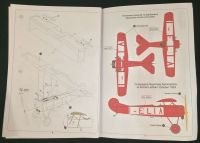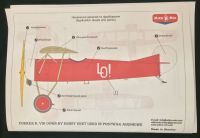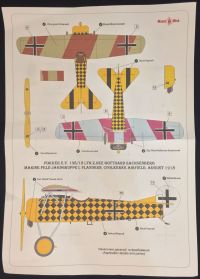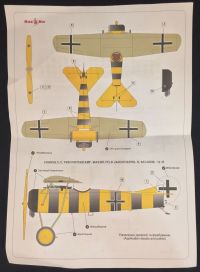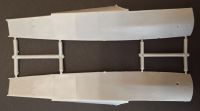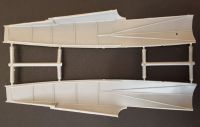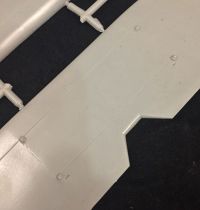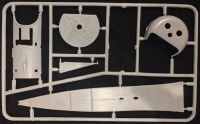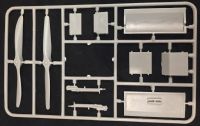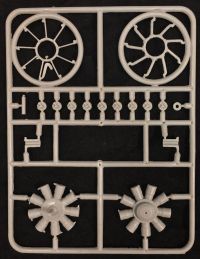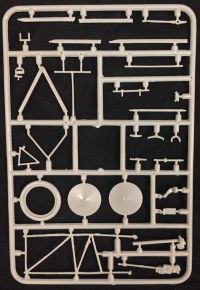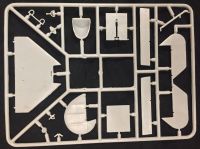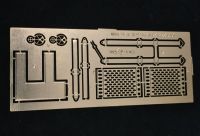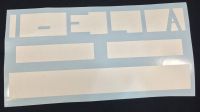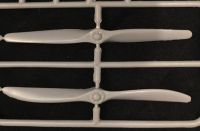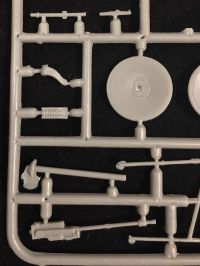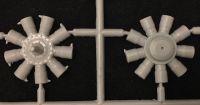MikroMir | 32-001: 1/32 Fokker E.V / D.VIII
Reviewed by Mike Swinburne
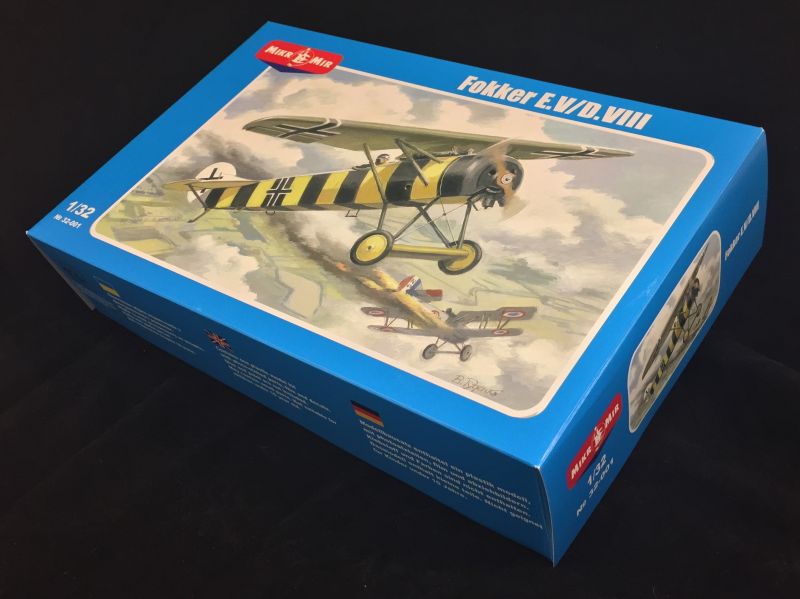

With the distinction of scoring the last aerial victory of the First World War, Fokker's late-war monoplane is relatively unknown outside of the WWI community when compared to other late-war fighters like the Fokker D.VII and Sopwith Snipe. It entered service in the late Summer of 1918 and suffered several wing failures in flight early in service leading to a wing redesign and a pause in production until October 1918. Although designed to use more-powerful rotary engines, it seems that the aircraft which entered service were all powered by an Oberursel Ur.II rotary engine producing only 110 horsepower. The power rating of the UR.II was roughly half of the output of the 200-230hp engines in the Viper-powered SE.5a and BR-2 rotary in the Sopwith Snipe, but despite this, references seem to agree that the performance of the Fokker was comparable due to the light airframe and lower drag offered in the monoplane design.
What's in a name? The aircraft was originally known as the Fokker E.V (E for Eindecker - one wing), before a naming convention change from Idflieg (an abbreviation for the military aircraft certification bureau in the German government) redesigned the plane as the Fokker D.VIII. Allied pilots reportedly nicknamed the plane the Flying Razor.
The Flying Razor is MikroMir's first aircraft kit in large scale, and a welcome release in the WWI modeling community. The kit is a rerelease of the Avis kit, and builders looking for the plane in 1/32 scale will be delighted that they can now add it to their collection at a "sane" price, avoiding eBay costs of the Avis kit which has been nearing the $200 mark recently on the auction site. There are currently no other injection-molded plastic kits of the Fokker E.V / D.VIII in 1.32 scale; the only options previously available were the Avis kit and a rather rough effort from Battle Axe.
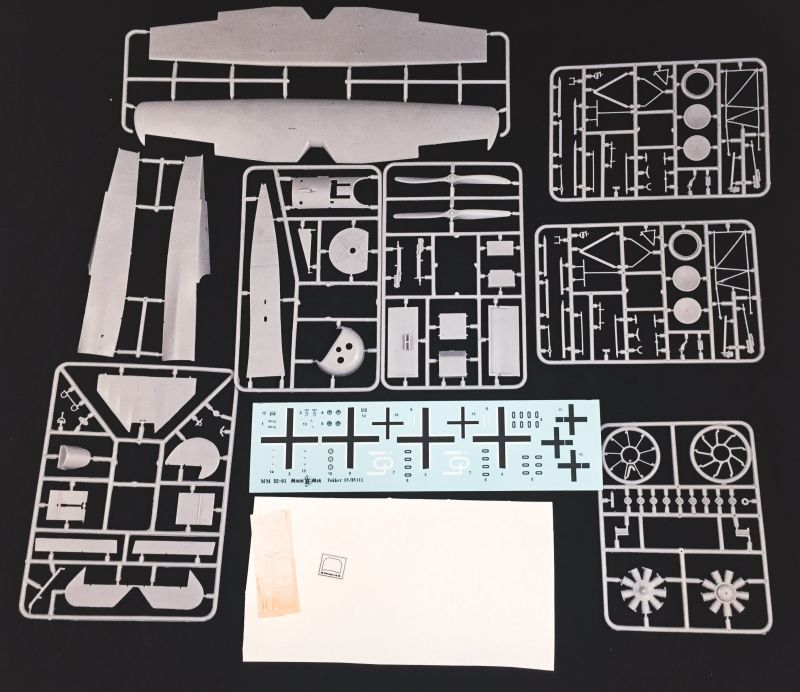
First Impressions
The kit arrived from Ukraine with all parts bagged and the kit box un assembled inside a fairly small shipping box. The only other time I've seen kits shipped like this without the box put together is when ordering direct from Roden who is also based in Ukraine. Despite the somewhat uncommon packing method, everything arrived undamaged.
A total of seven sprues make up the kit, along with a small fret of photo-etch, decal sheet, vinyl paint masks and acetate sheet for the windscreen. The look and feel of the plastic parts is very similar to kits that I've seen from Roden - some soft or simplified details, but still very buildable. The decals appear to be thin and brittle, and I have some concern about the quality of these. Also included in this release that was not in the Avis boxing is a small fret of photo-etch details, and vinyl paint masks for the lettering on the red civilian paint scheme. Decals are included for four aircraft; lozenge decals are not included as the aircraft depicted in decals did not feature lozenge fabric-covered fuselages.
MikroMir stated before the release that the wing has been improved over the original Avis release. I have not seen the original Avis release in person so I cannot comment on what, if anything has really been updated. The wing struts appear to be quite thin and it seems that aligning all and joining the wing may be tricky. Maybe we'll get lucky and someone will copy these in metal with the front three struts per side done as a single piece.
Instruction Booklet and Marking Diagrams
Build instructions are laid out as black and white line drawings over four small pages, with some items in red to call out the photo-etch details. One small side profile is included in color to assist with wing strut alignment. There is no mention of the rigging for control surfaces or the simple "X" bracing on the landing gear strut, but there is great information on this and other details in the Windsock Datafile on the plane, as well as photo references online for replicas of the plane.
The four marking options give the builder a variety of colorful options including a post-war aircraft supposedly flown by Ernst Udet at airshows. There has been a lot of debate, sometimes rather heated debate, on the finish of the D.VIII wing. Specifically, whether the wings on (some?) active aircraft were painted green, or were diagonal sections of brown and green stain on top, and blue and violet on the bottom. You'll find aircraft with both wing finishes in the marking options; information tends to point to active aircraft having been the more colorful stain option. The builder will need to mask and paint the black and yellow checkers if building that aircraft.
This paint job may have wood grain from the plywood wing covering showing through so the builder could produce a very interesting looking wing with these colors over carefully-painted wood grain or Uschi, Aviattic, or HGW wood grain decals. Check out this thread over on The Aerodrome for more info and to help with your selection of colors.
Looking at the Parts
Initial impression of the plastic parts that this is a short-run kit. Sprue gates are a normal size but there is a fair bit of flash on some parts including the cockpit tubing and horizontal stabilizer. The plastic seems fairly soft so take your time with the flash removal to avoid damaging the parts. If you've worked with Roden kits, this feels like the same type of styrene. Panel lines on the wing halves are recessed but the depth is a bit uneven in some places; should be an easy fix. The fuselage halves and underside all have an effect of the fuselage frame on the outside that looks pretty realistic. I really like the depiction of the stitched fabric on the underside fuselage piece, and if it wasn't for some slight inconsistencies in mold quality along the stitch line this would easily be my favorite depiction of fabric join stitching on a 1/32 aircraft.
Cockpit tubing and a number of internal details seem soft and/or a bit oversized, but it looks like everything is present. The Oberursel rotary engine has cooling fin details that look nice from the front, although the rear piece appears to have slightly softer cooling fin detail. Bolts on the front engine are a little on the soft side but don't look bad. The photo-etch fret gives you a standard 4-point harness, cooling jackets for the Spandaus, and a blanking piece to cover the gun cutout on the unarmed postwar planes. Detail and quality of the photo-etch parts seems comparable to those included in Wingnut Wings kits. The vinyl paint masks included will allow the builder to paint the letters on the civilian version of the plane, I've removed some of the masks on the sheet to more clearly show the masks in the photo.
Component Detail and "Sprucing It Up"
Detail of parts included in MikroMir's kit allow the builder to create a pretty nice looking replica of the E.V/D.VIII out of the box, or with a small to moderate amount of detail work. For builders who want to depict the model with the best possible detail and do not with to scratchbuild, the following accessories are available or announced for builders wanting to spruce up various areas of their Flying Razor:
Decals: Pheon Decals has announced in April 2017 a decal collection in development which will include "the full range of Jasta 6 individual markings, with Jasta tail stripes and cowling 'petals'." Aircraft in Jasta 6 featured fuselages covered in lozenge fabric. Lozenge decals are available from Aviattic, Wingnut Wings, and HGW. Go with Aviattic for the most accurate representation of the color and shape of the lozenge.
Engine: Many companies offer Oberursel Ur.II rotary engines in plastic and resin. In plastic, it's available from Wingnut Wings and Roden as standalone items. In resin, from Copper State and Vector.
Cockpit details: Pick up Aviattic's resin Fokker seat, a set of HGW belts, a 3d-printed compass from Bo Monro's Flugzeugwerke store on Shapeways.com, and instruments from Airscale or Eduard. Parts and Eduard PE sets designed for Roden's Fokker D.VI / DR.1, and WNW's Fokker D.VII may also be utilized, check your references.
Spandau guns: Very nice full Spandaus are available from Gaspatch and Eduard. Metal cooling jackets to use on kit parts are available from Master and HGW.
Propeller: To use with the kit propellers, photo-etch prop bosses from Copper State combined with hex bolts from Taurus will look superb.
In Summary
Unique plane? Yes. Buildable kit? Yes, just be careful cleaning up and assembling wing and gear struts. Room for improvement? Yes, but what kit doesn't? For the cost of the kit (under $50US including postage from Ukraine from eBay), I think this represents decent value and will be buying another. My sincere thanks to MikroMir for the opportunity to review this new release.
© Mike Swinburne 2017
This review was published on Sunday, May 14 2017; Last modified on Thursday, November 23 2017

